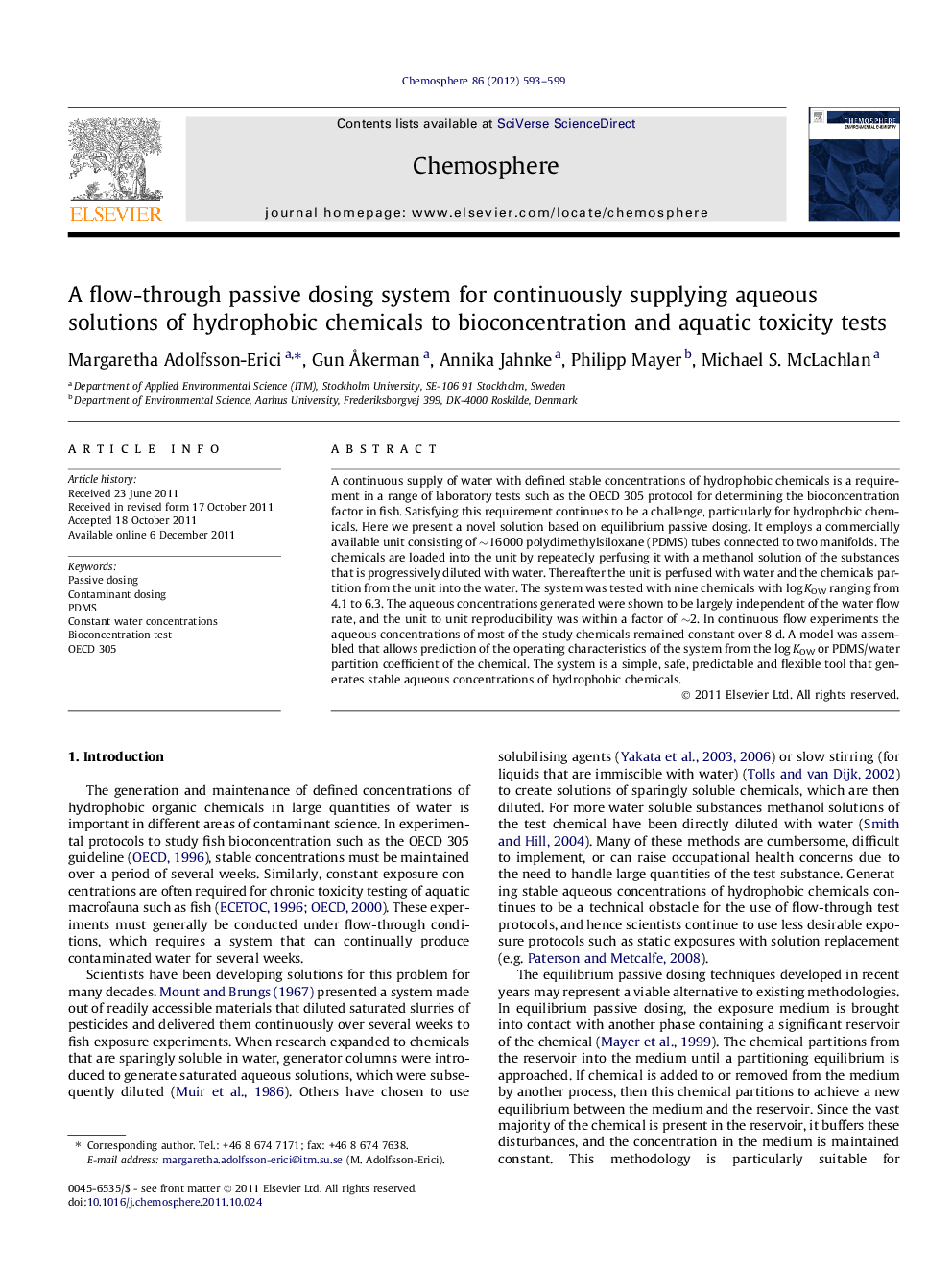| کد مقاله | کد نشریه | سال انتشار | مقاله انگلیسی | نسخه تمام متن |
|---|---|---|---|---|
| 4410164 | 1307532 | 2012 | 7 صفحه PDF | دانلود رایگان |

A continuous supply of water with defined stable concentrations of hydrophobic chemicals is a requirement in a range of laboratory tests such as the OECD 305 protocol for determining the bioconcentration factor in fish. Satisfying this requirement continues to be a challenge, particularly for hydrophobic chemicals. Here we present a novel solution based on equilibrium passive dosing. It employs a commercially available unit consisting of ∼16 000 polydimethylsiloxane (PDMS) tubes connected to two manifolds. The chemicals are loaded into the unit by repeatedly perfusing it with a methanol solution of the substances that is progressively diluted with water. Thereafter the unit is perfused with water and the chemicals partition from the unit into the water. The system was tested with nine chemicals with log KOW ranging from 4.1 to 6.3. The aqueous concentrations generated were shown to be largely independent of the water flow rate, and the unit to unit reproducibility was within a factor of ∼2. In continuous flow experiments the aqueous concentrations of most of the study chemicals remained constant over 8 d. A model was assembled that allows prediction of the operating characteristics of the system from the log KOW or PDMS/water partition coefficient of the chemical. The system is a simple, safe, predictable and flexible tool that generates stable aqueous concentrations of hydrophobic chemicals.
► The commercially available passive dosing unit contained ∼16 000 thin PDMS tubes.
► The unit was loaded with chemicals from a methanol/water solution.
► Aqueous solutions of the chemicals were generated by perfusing the unit with water.
► The concentrations were stable over 8 d and independent of perfusion rate.
Journal: Chemosphere - Volume 86, Issue 6, February 2012, Pages 593–599